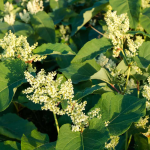Japanese knotweed is a fast-growing, invasive plant that can cause serious problems in gardens, homes, and natural areas. It was originally brought to many countries as an ornamental plant, but its aggressive growth has made it a threat to native plants and properties.
Many homeowners and land managers now consider it a major problem. In this article, we will explain five important reasons why removing Japanese knotweed is necessary.
In parallel : How to Design a Luxurious Home Movie Theater on a Mid-Range Budget?
1. It Damages Property
One of the most serious reasons to remove japanese knotweed is the damage it can cause to buildings and infrastructure. This plant has strong, fast-growing roots that can break through concrete, walls, and even the foundations of houses.
In the same genre : What’s the Best Way to Add a Contemporary Extension to a Heritage Home?
If left unchecked, it can cause cracks in patios, driveways, and even the walls of homes. These repairs can be expensive and may lower the value of the property. Removing the plant early can save homeowners a lot of money and prevent severe damage.
2. It Spreads Rapidly
Japanese knotweed is known for its rapid spread. It can grow up to ten centimeters a day during the summer, and even the smallest piece of its root can grow into a new plant. This makes it extremely difficult to control once it has taken hold in an area.
Without proper removal, it can quickly take over gardens, parks, and natural areas, crowding out native plants. This ability to spread so easily is why removing it as soon as it appears is important.
3. It Harms Local Ecosystems
Japanese knotweed is not just a problem for homeowners; it is also a threat to the environment. As it spreads, it outcompetes native plants for sunlight, water, and nutrients. This can lead to a loss of biodiversity, which means fewer plant and animal species in the area.
In addition, it can change the soil composition, making it harder for other plants to grow. By removing Japanese knotweed, people can protect their local ecosystems and support native species.
4. It Reduces Property Value
Homes and land with Japanese knotweed can be worth less than similar properties without it. Many buyers avoid buying homes with this plant because they fear the cost of removing it or the damage it can cause.
Some banks may even refuse to provide mortgages for properties with Japanese knotweed problems. This can make it difficult to sell a home. Getting rid of Japanese knotweed can help maintain or even increase property value.
5. Legal Responsibility
In some areas, homeowners have a legal responsibility to control or remove Japanese knotweed on their property. Allowing it to spread to a neighbor’s property can lead to legal disputes and fines.
Removing the plant is not just about protecting the property itself but also avoiding legal problems. Knowing and following local laws about invasive plants can prevent conflicts.
Conclusion
Japanese knotweed is a dangerous and damaging plant that must be removed as soon as it appears. It can destroy property, spread rapidly, harm local ecosystems, lower property values, and even cause legal problems.
By understanding these five reasons, homeowners and land managers can see the importance of dealing with this plant quickly and effectively. Removing Japanese knotweed protects not only the property but also the environment and legal peace of mind.
















